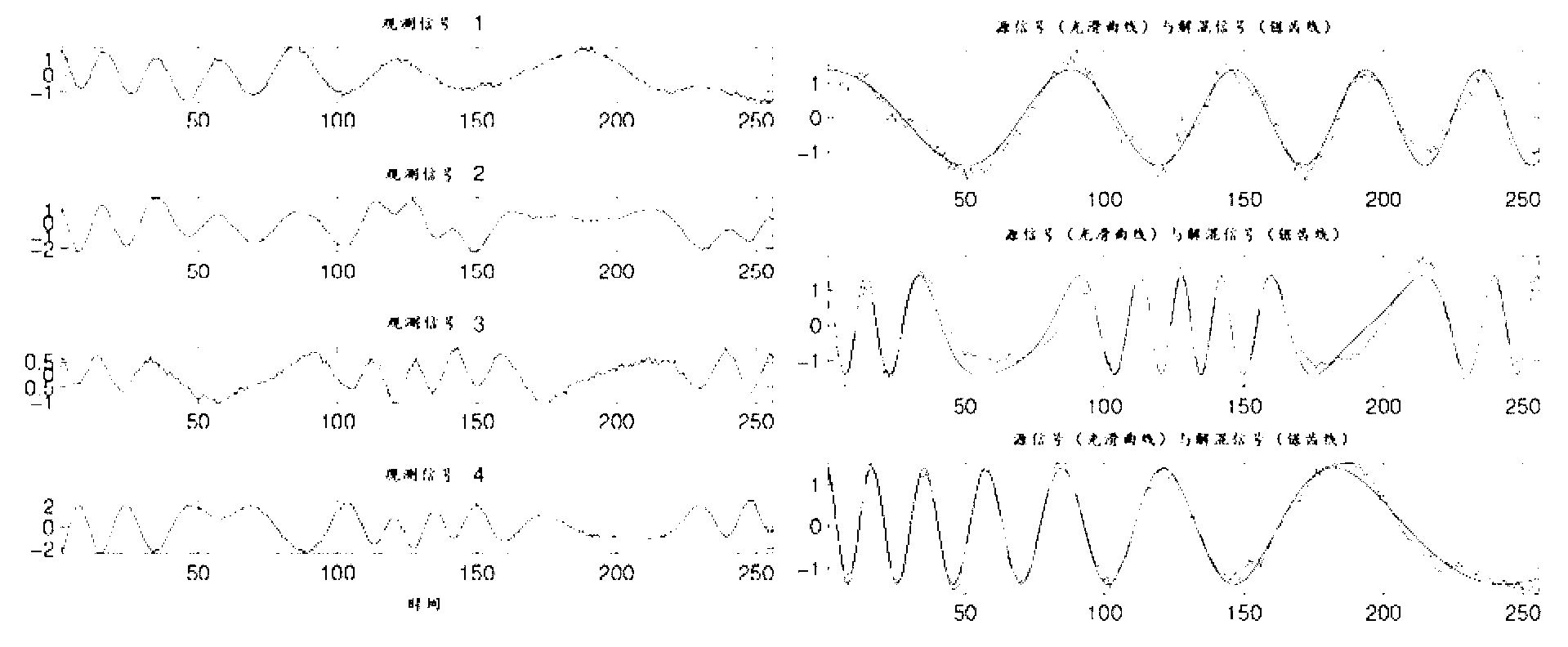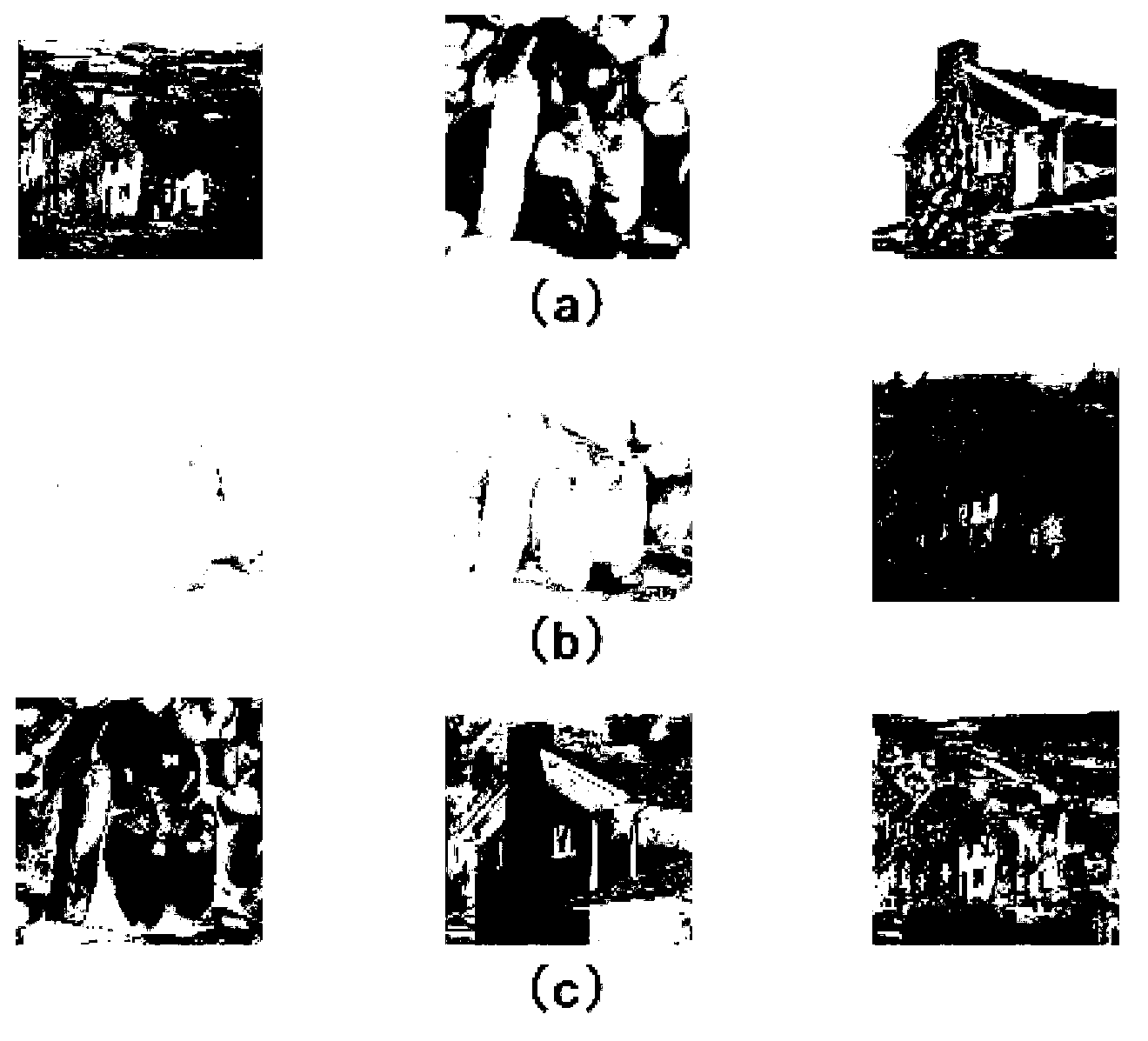Cross-power spectrum based blind source separation method
A cross-power spectrum and blind source separation technology, applied in the field of blind source separation, can solve the problems of high-speed calculation difficulties, lack of portability, and inability to effectively describe the time-varying characteristics of signals, and achieve good experimental results
- Summary
- Abstract
- Description
- Claims
- Application Information
AI Technical Summary
Problems solved by technology
Method used
Image
Examples
Embodiment 1
[0047] figure 1 An example of blind source separation for a multi-channel mixed signal, figure 1 On the left is the observed signal X, figure 1 The smooth curve on the right is the true source signal Z' and the sawtooth curve is the calculated estimated signal Z.
[0048] In order to test the validity in the experiment, where the source signal represents Z'=[s 1 ;s 2 ;s 3 ], that is, the following three source signals, t=1,...,256 in the experiment.
[0049] the s 1 (t)=cos(0.00024414t 2 +0.05t)
[0050] the s 2 (t)=cos(4.13sin(0.0154πt)+0.25t)
[0051] the s 3 (t)=cos(0.0000017872t 3 -0.0014t 2 +0.4027t)
[0052] The observed signal X is generated by multiplying the following random matrix with Z'.
[0053] 0.4119 - 0.0695 1.2778 - 0.5296 0.8313 ...
Embodiment 2
[0078] figure 2 For an example of blind source separation for mixed images, figure 2 a is the source image Z' before mixing, figure 2 b is the observed mixed image X, that is, the original image is mixed by the following matrix.
[0079] The three images selected in the experiment, such as figure 2 As shown in a, the size of each image is 256×256 pixels, and each image is converted into a 1-dimensional signal s with a length of 256×256=65536 during mixing i (i=1,2,3), then the source signal represents Z'=[s 1 ;s 2 ;s 3 ], the source signals are mixed in the following matrix.
[0080] 0.6991 0.9012 0.8445 0.2454 0.7209 0.6812 0.4458 0.2279 0.1275 ...
PUM
 Login to View More
Login to View More Abstract
Description
Claims
Application Information
 Login to View More
Login to View More - R&D
- Intellectual Property
- Life Sciences
- Materials
- Tech Scout
- Unparalleled Data Quality
- Higher Quality Content
- 60% Fewer Hallucinations
Browse by: Latest US Patents, China's latest patents, Technical Efficacy Thesaurus, Application Domain, Technology Topic, Popular Technical Reports.
© 2025 PatSnap. All rights reserved.Legal|Privacy policy|Modern Slavery Act Transparency Statement|Sitemap|About US| Contact US: help@patsnap.com



